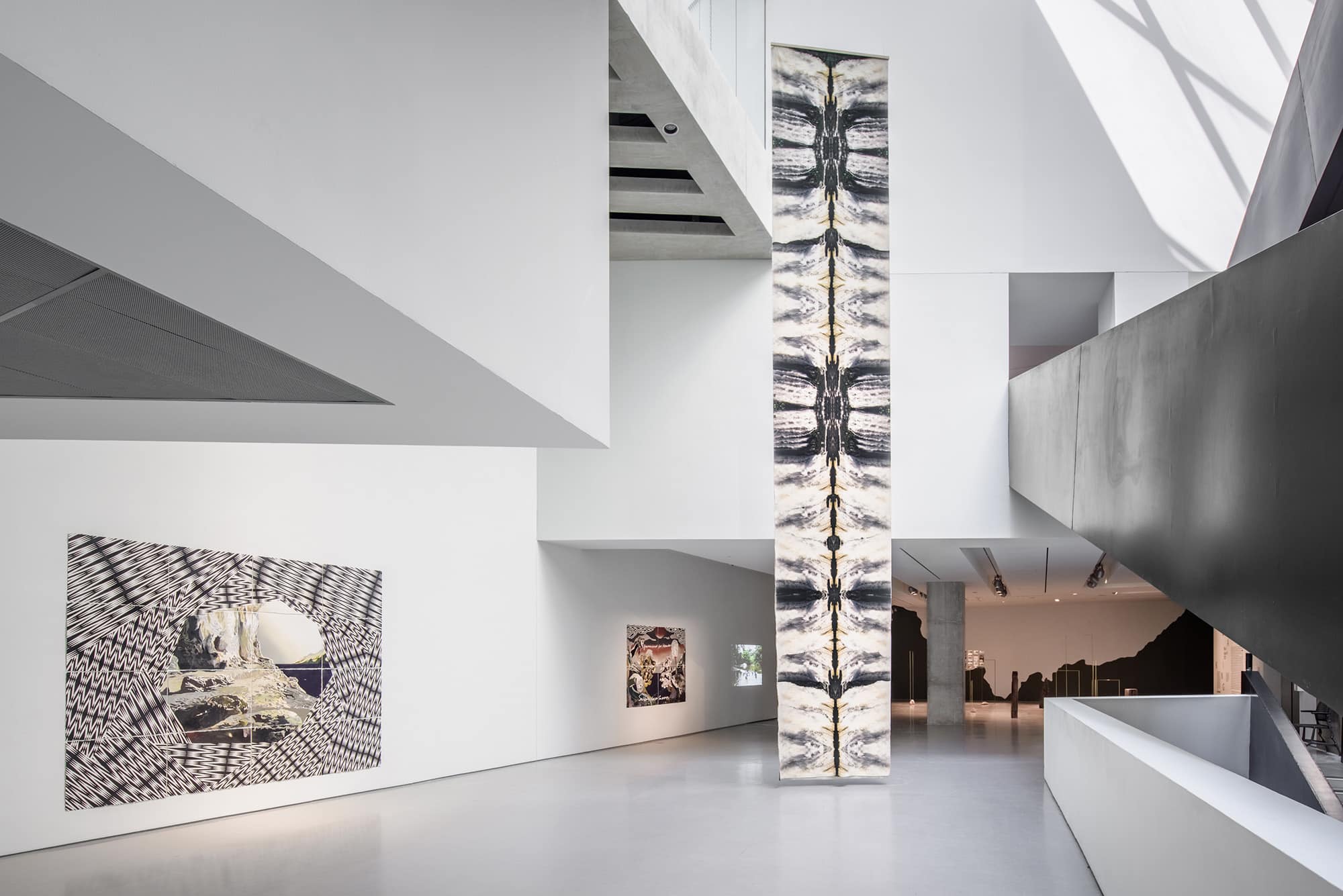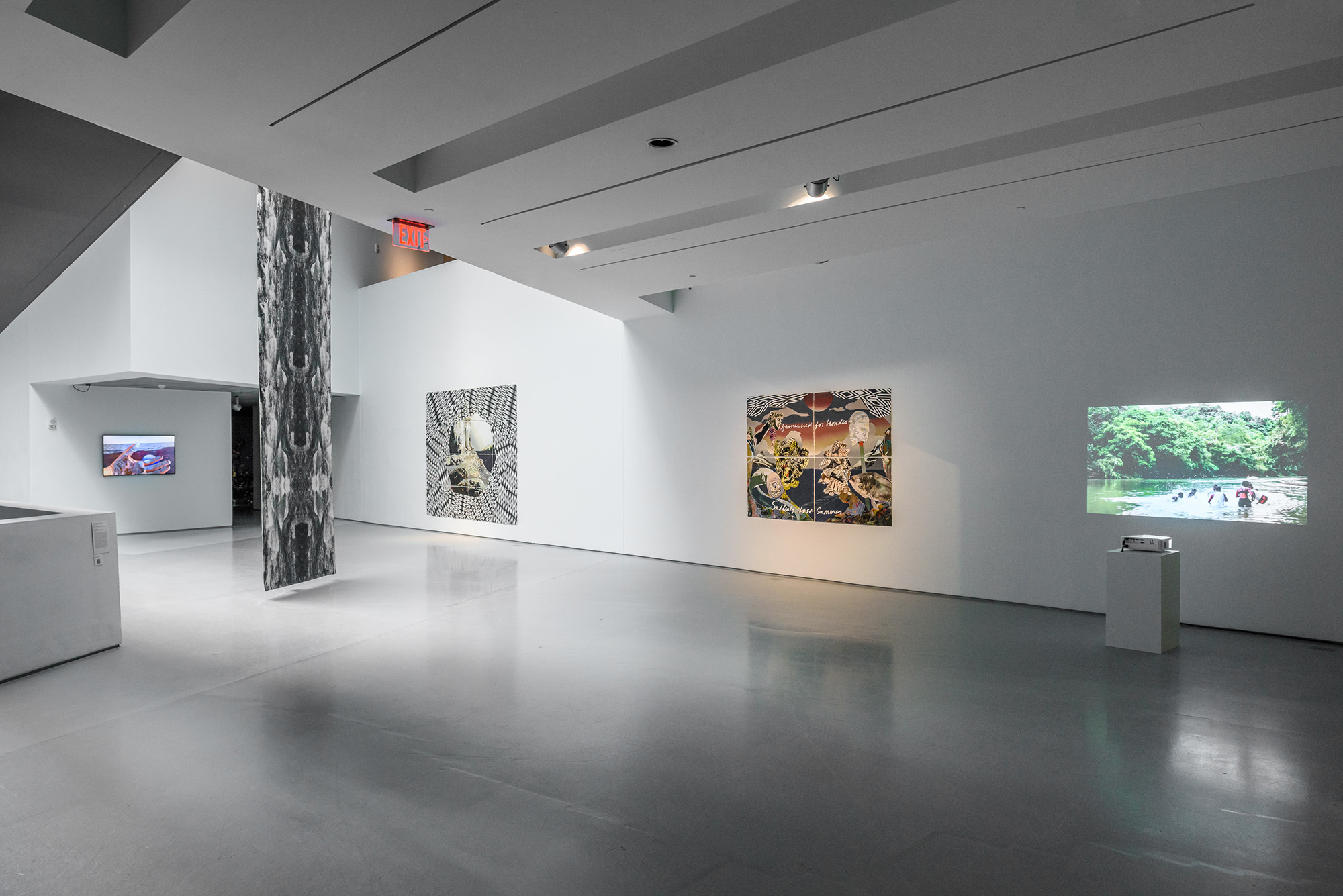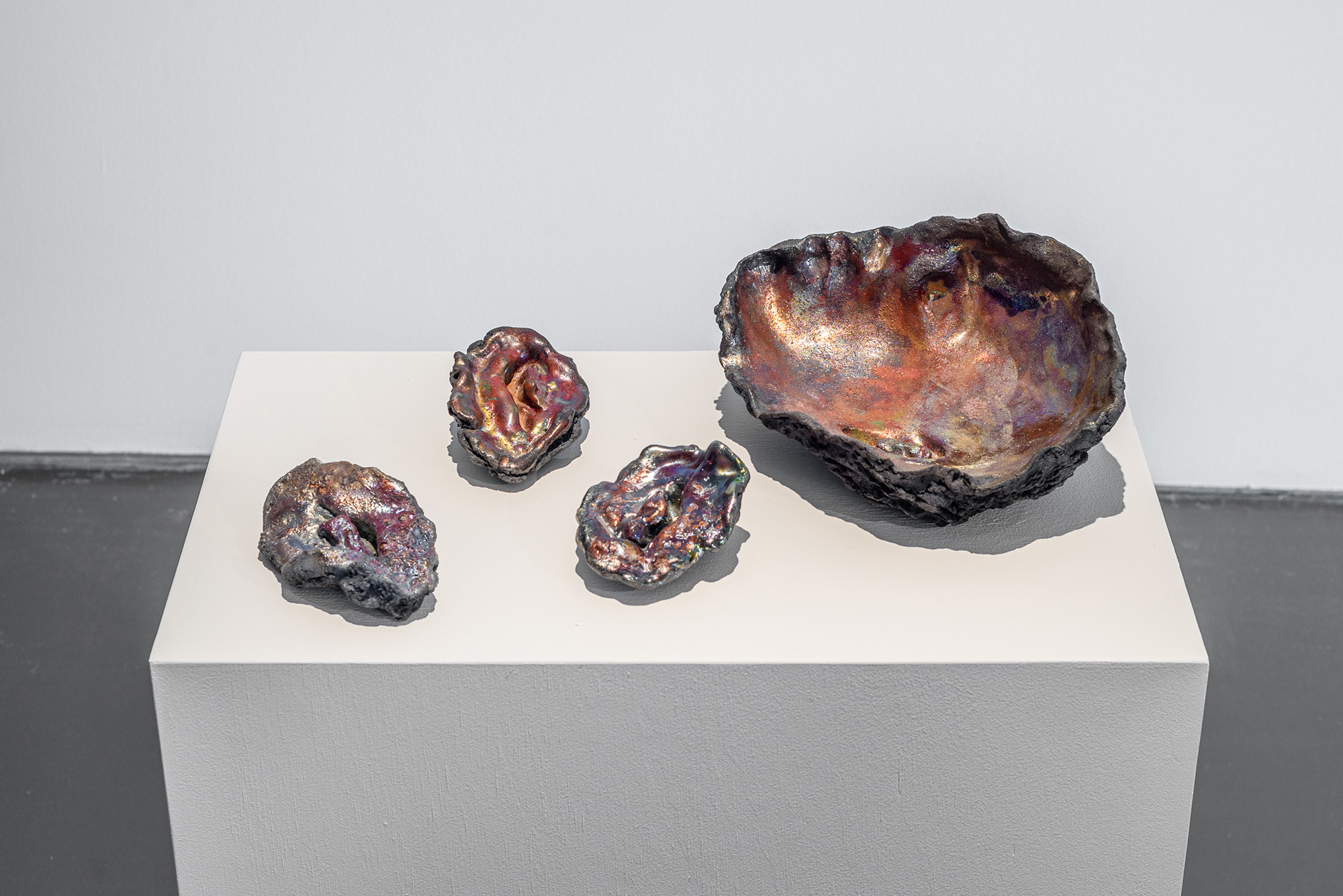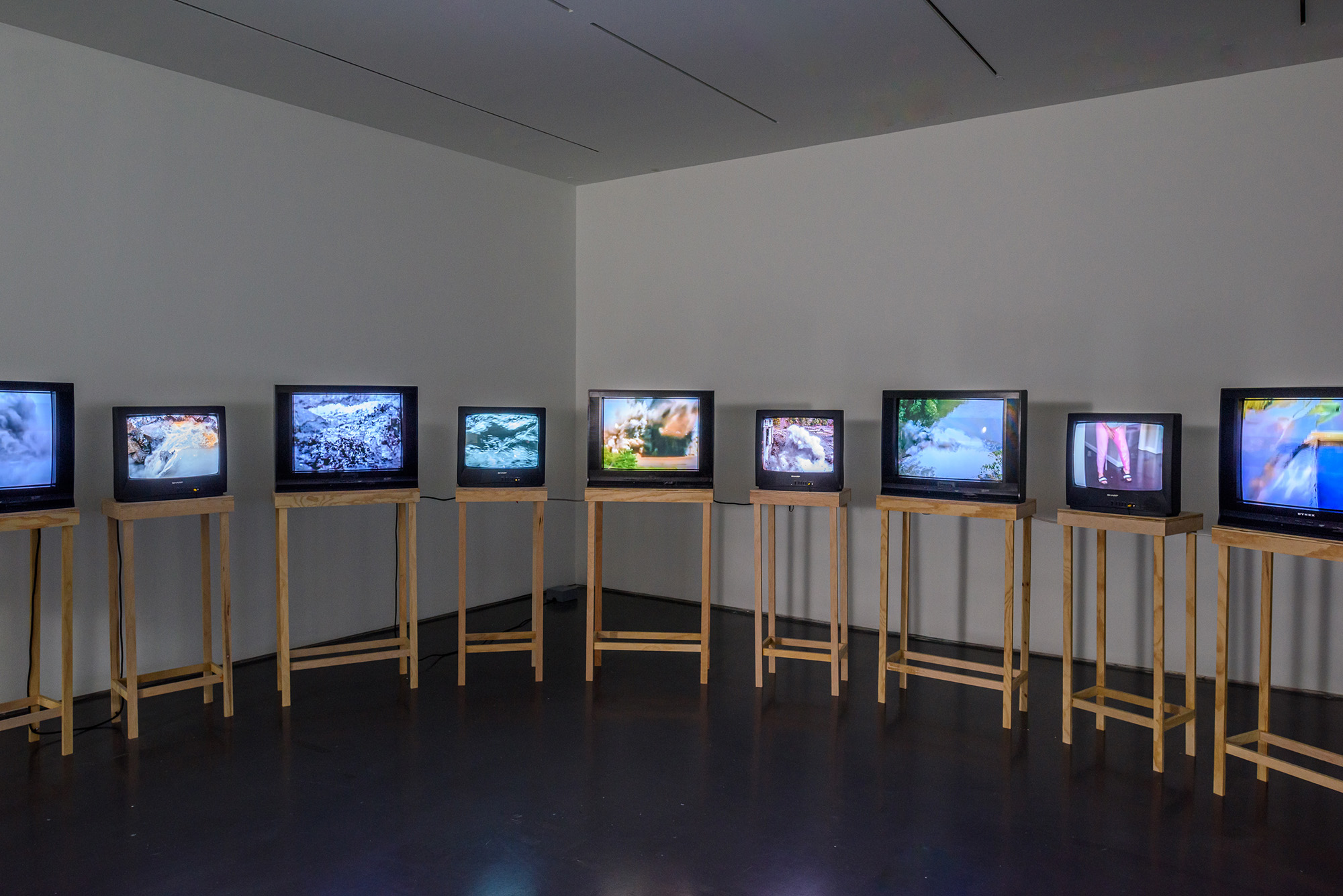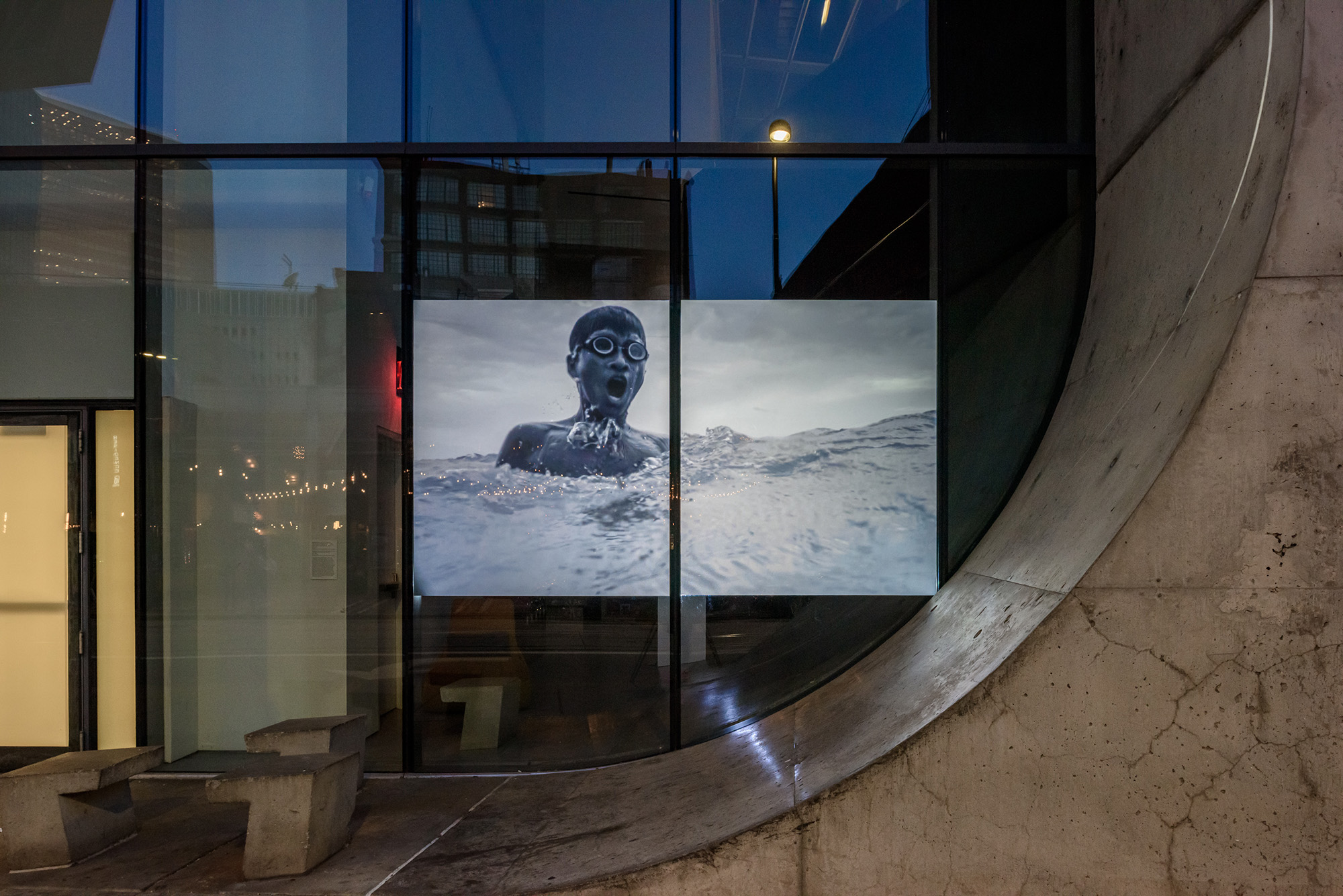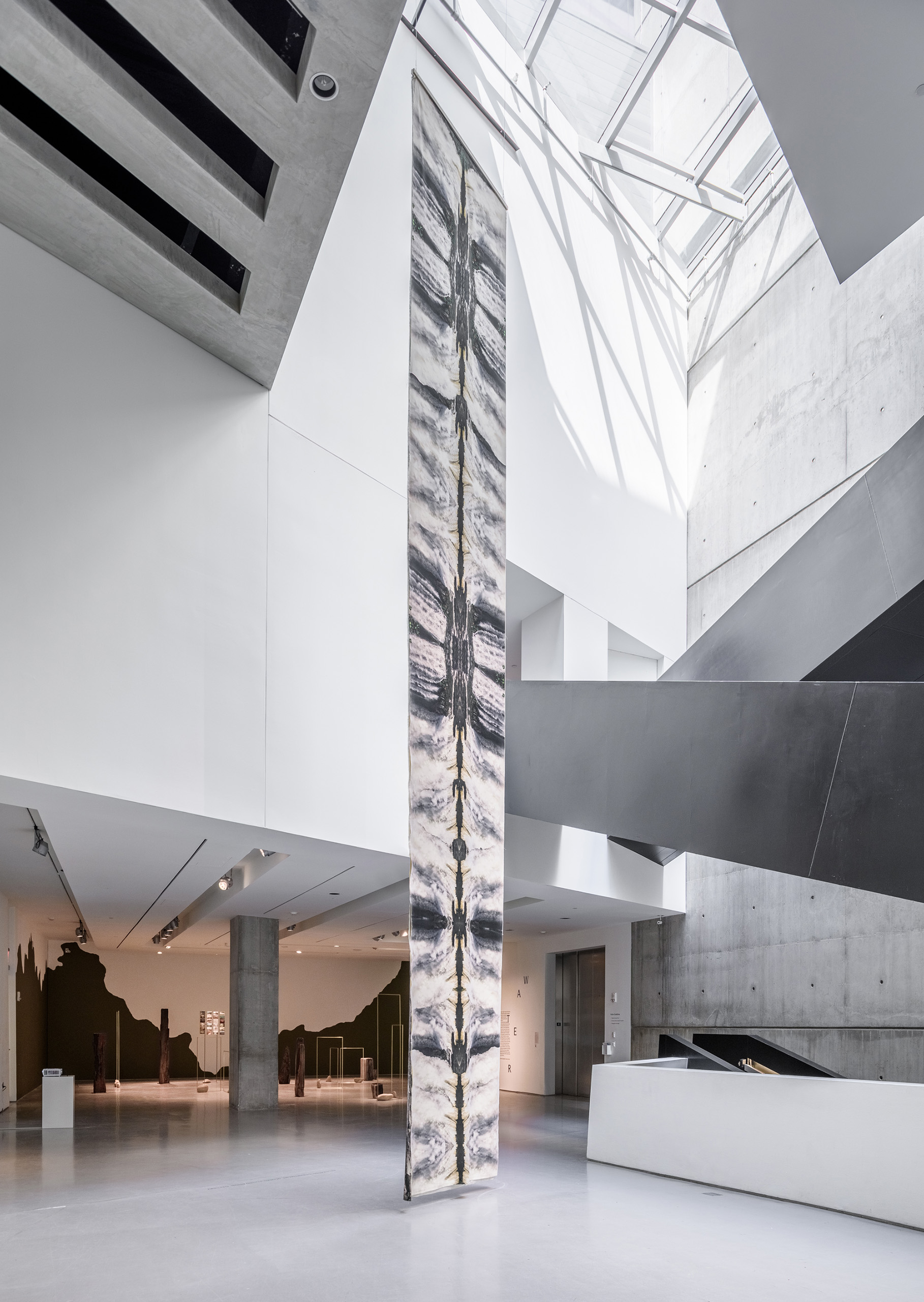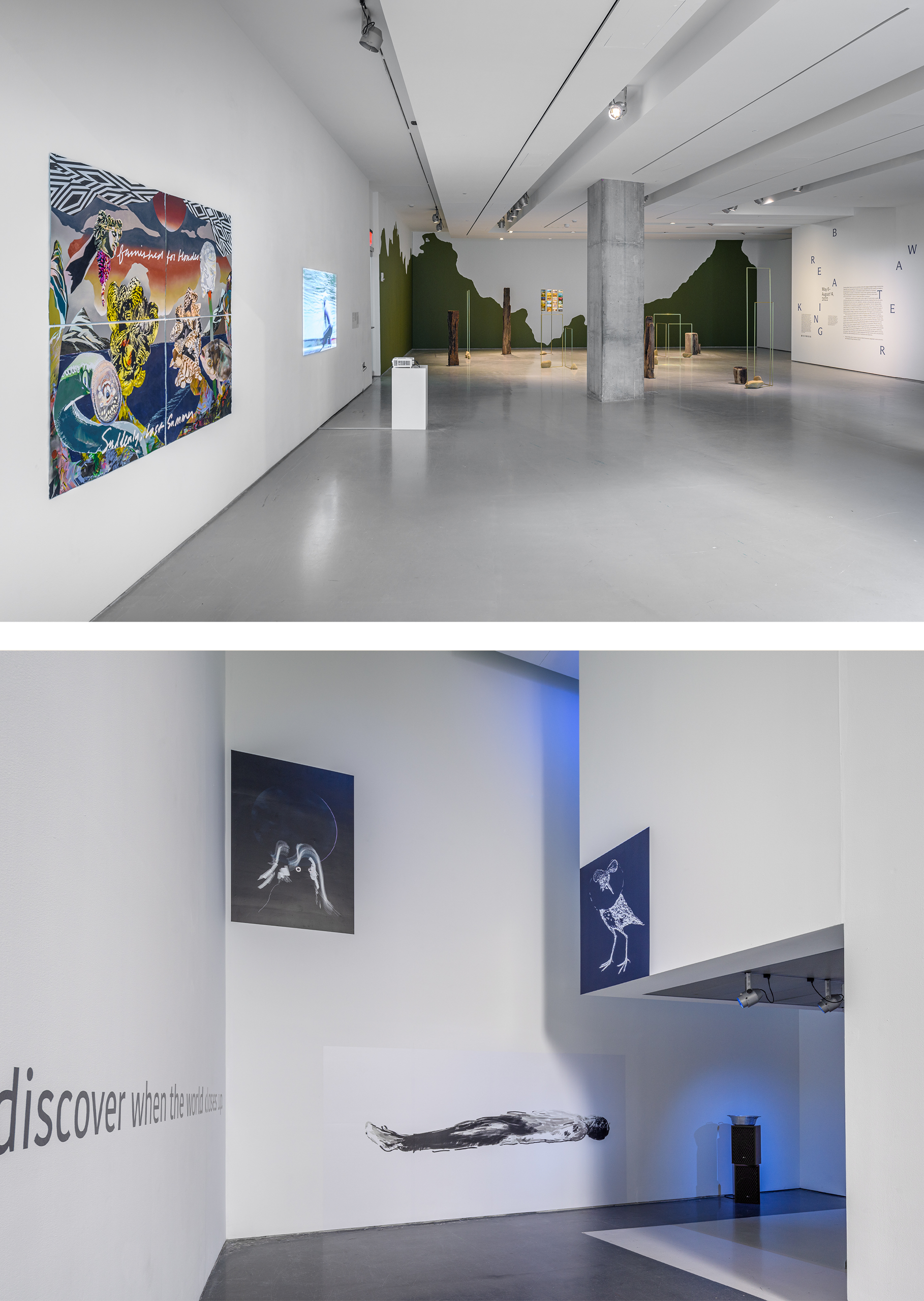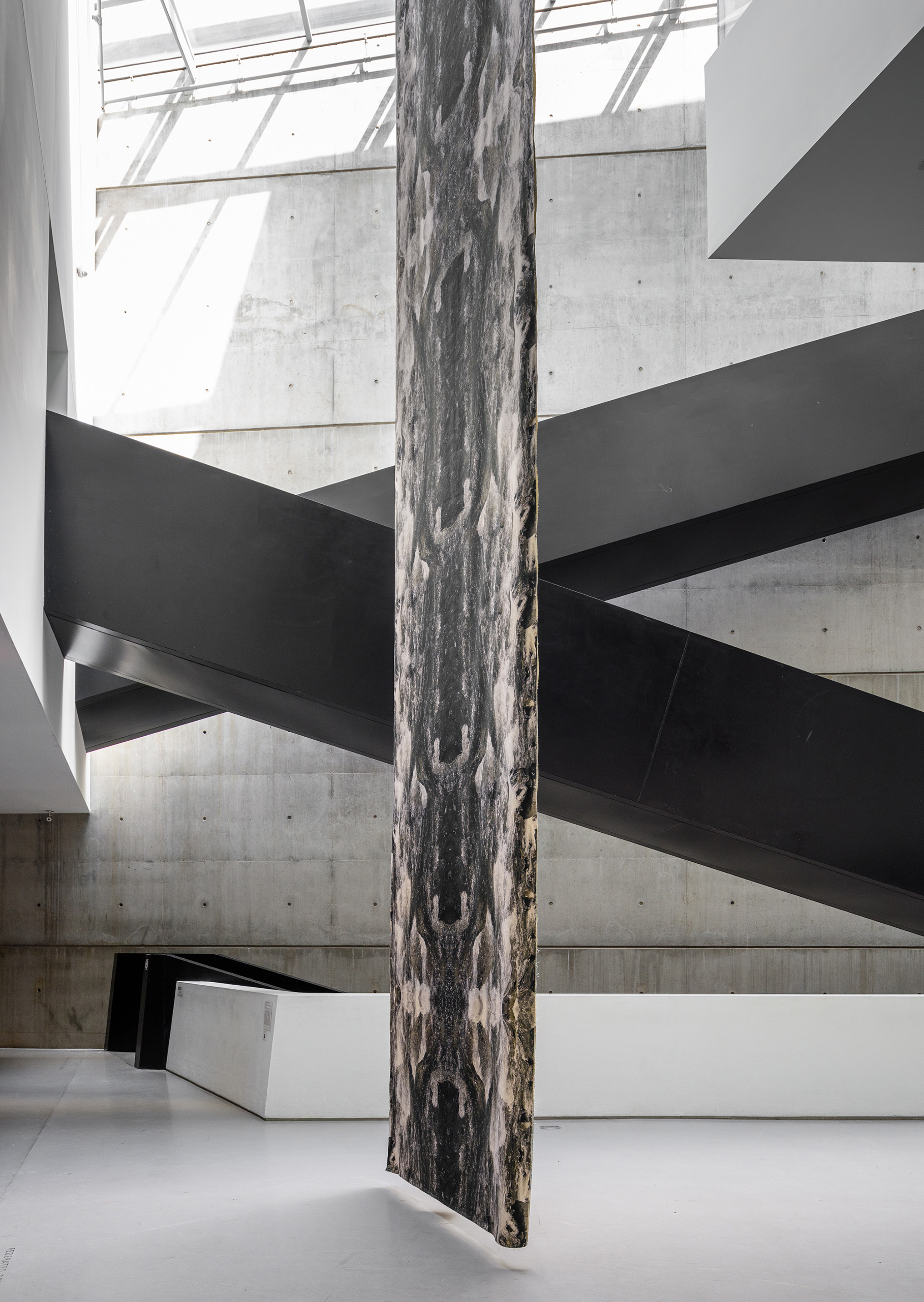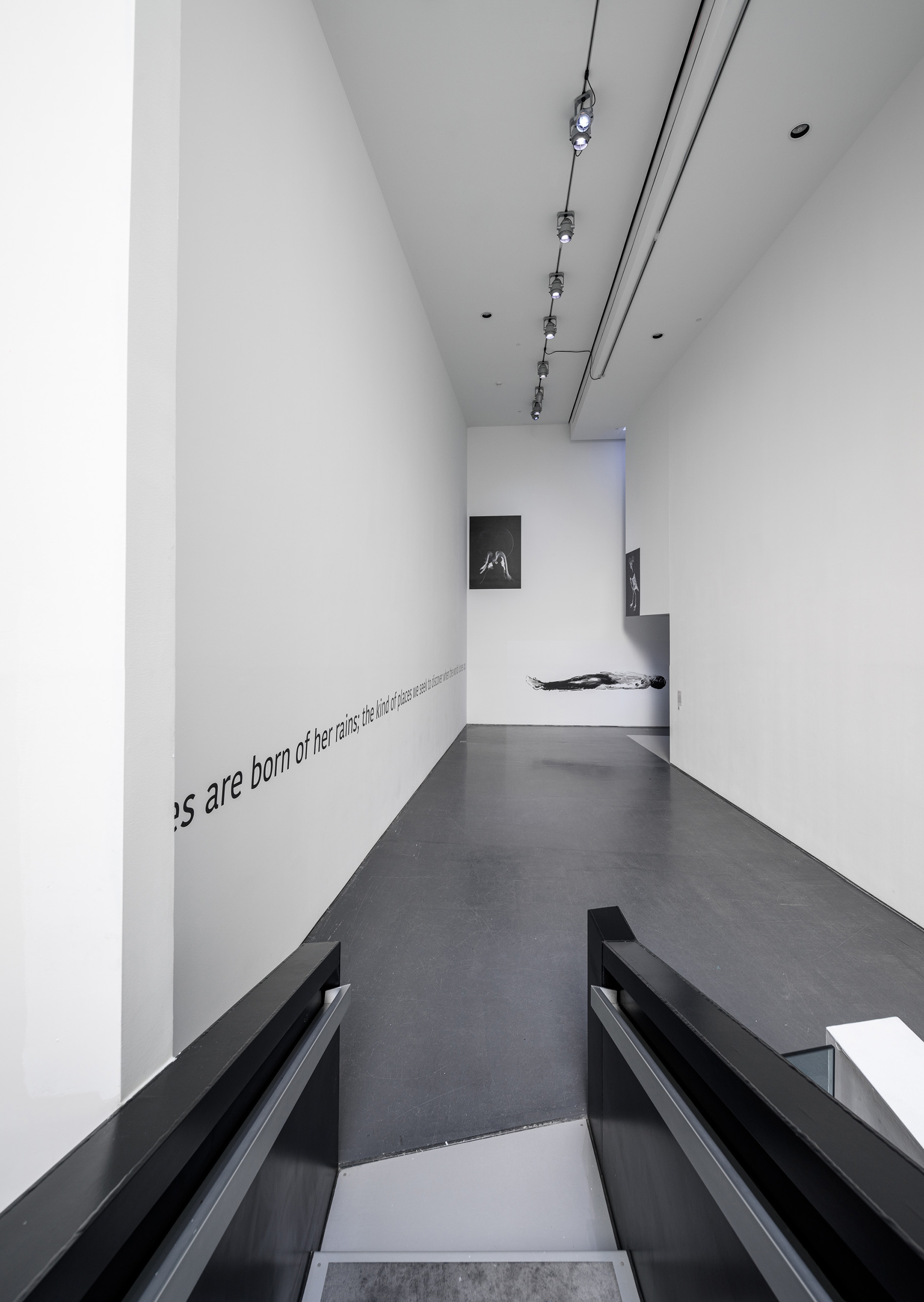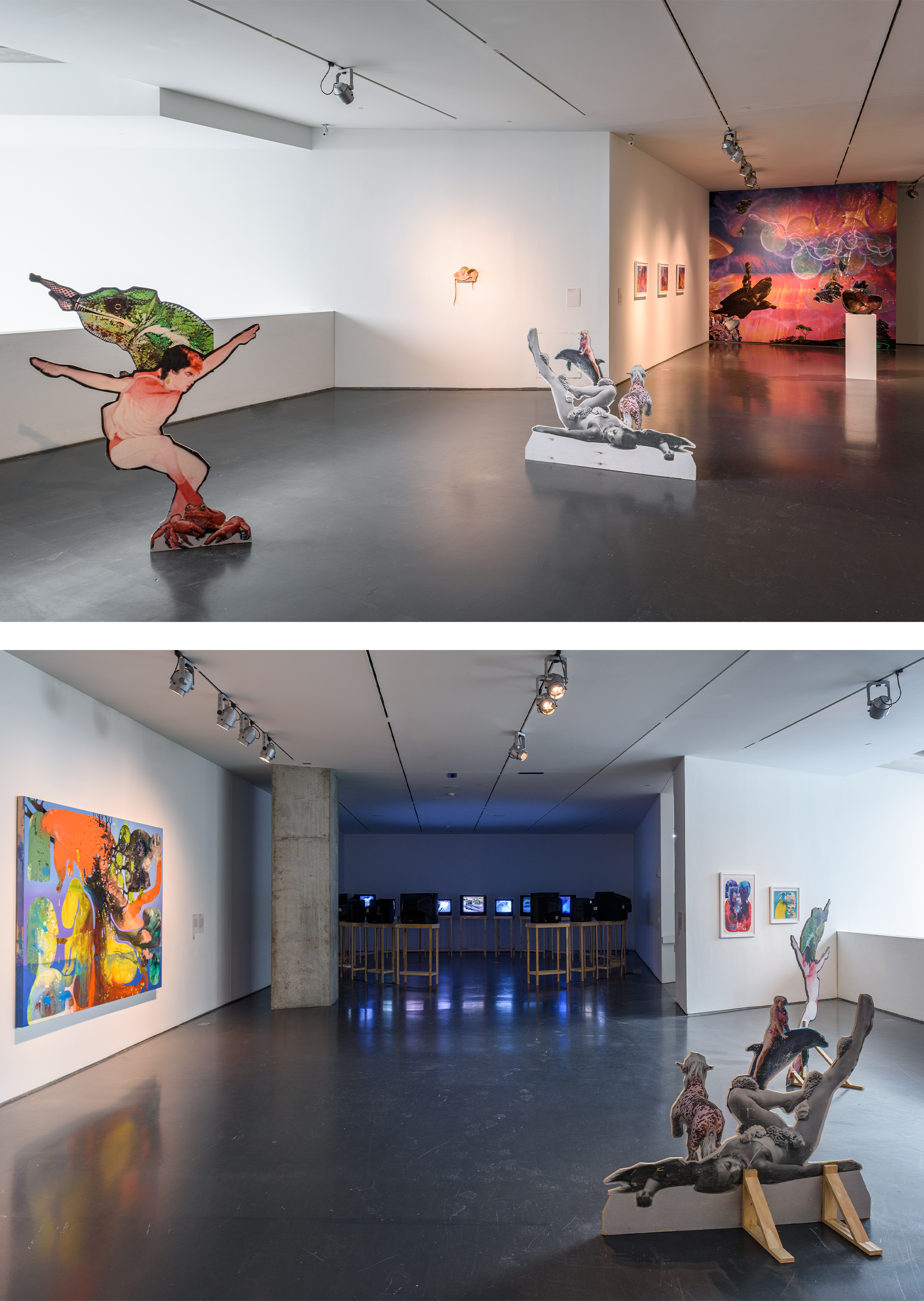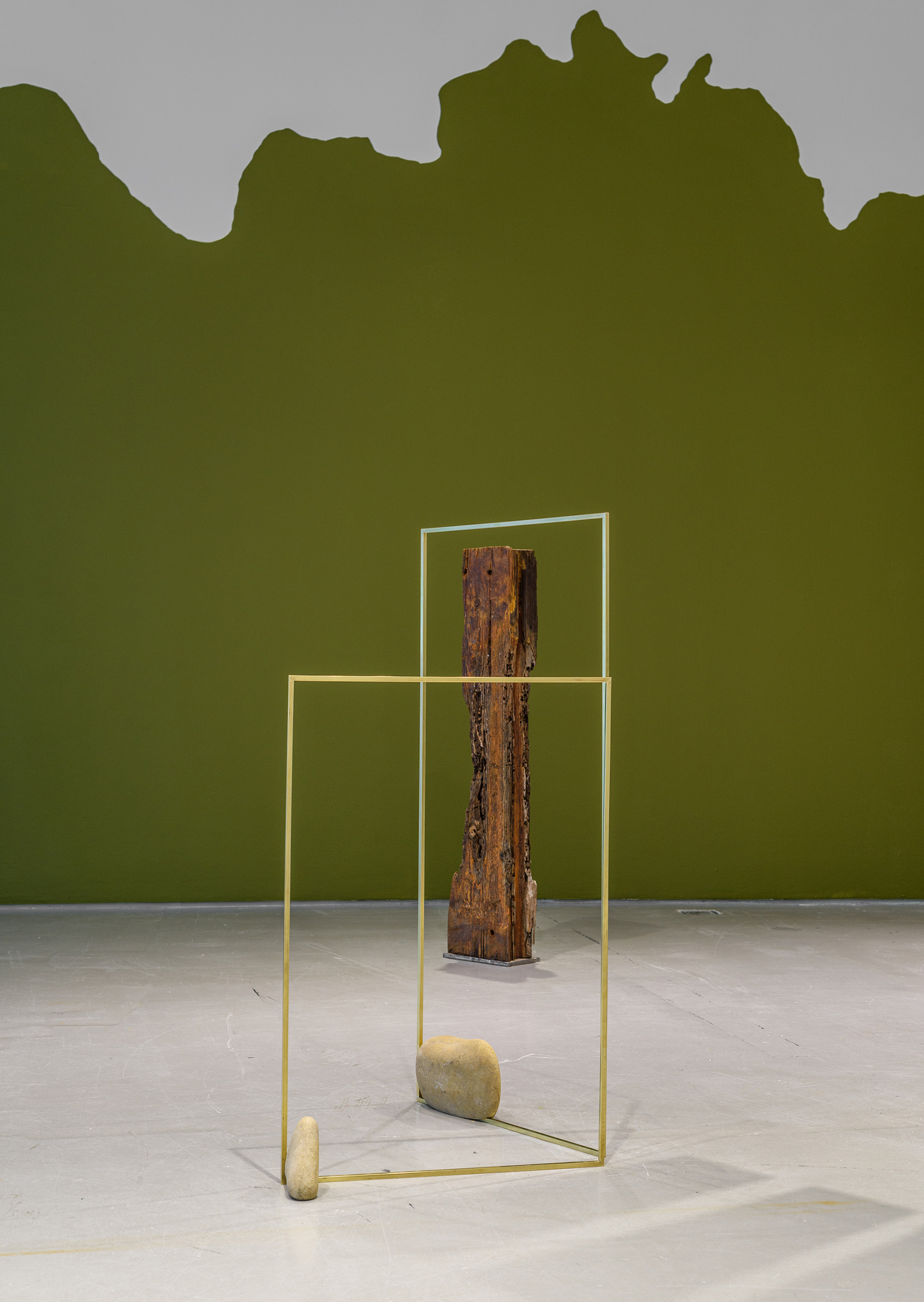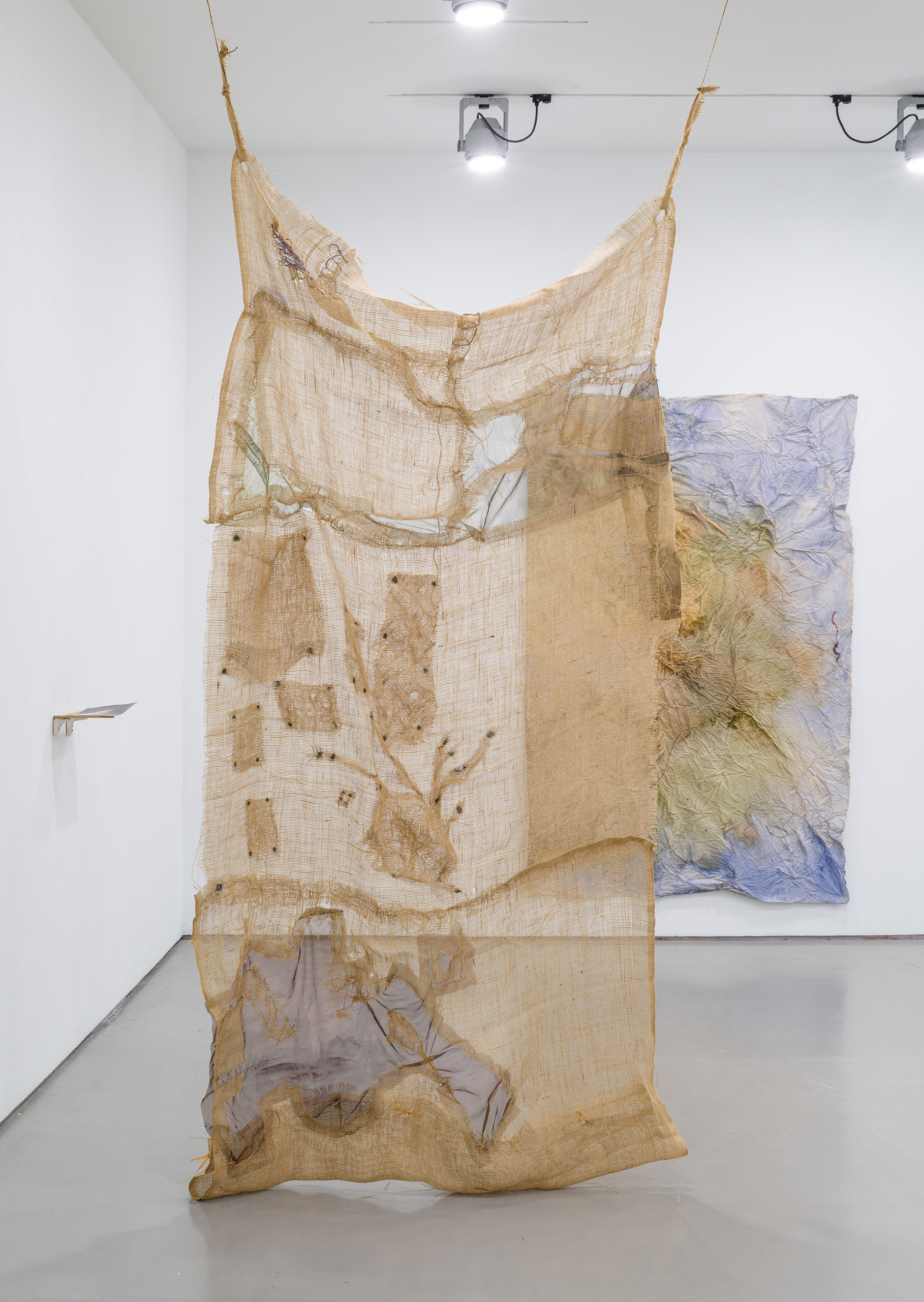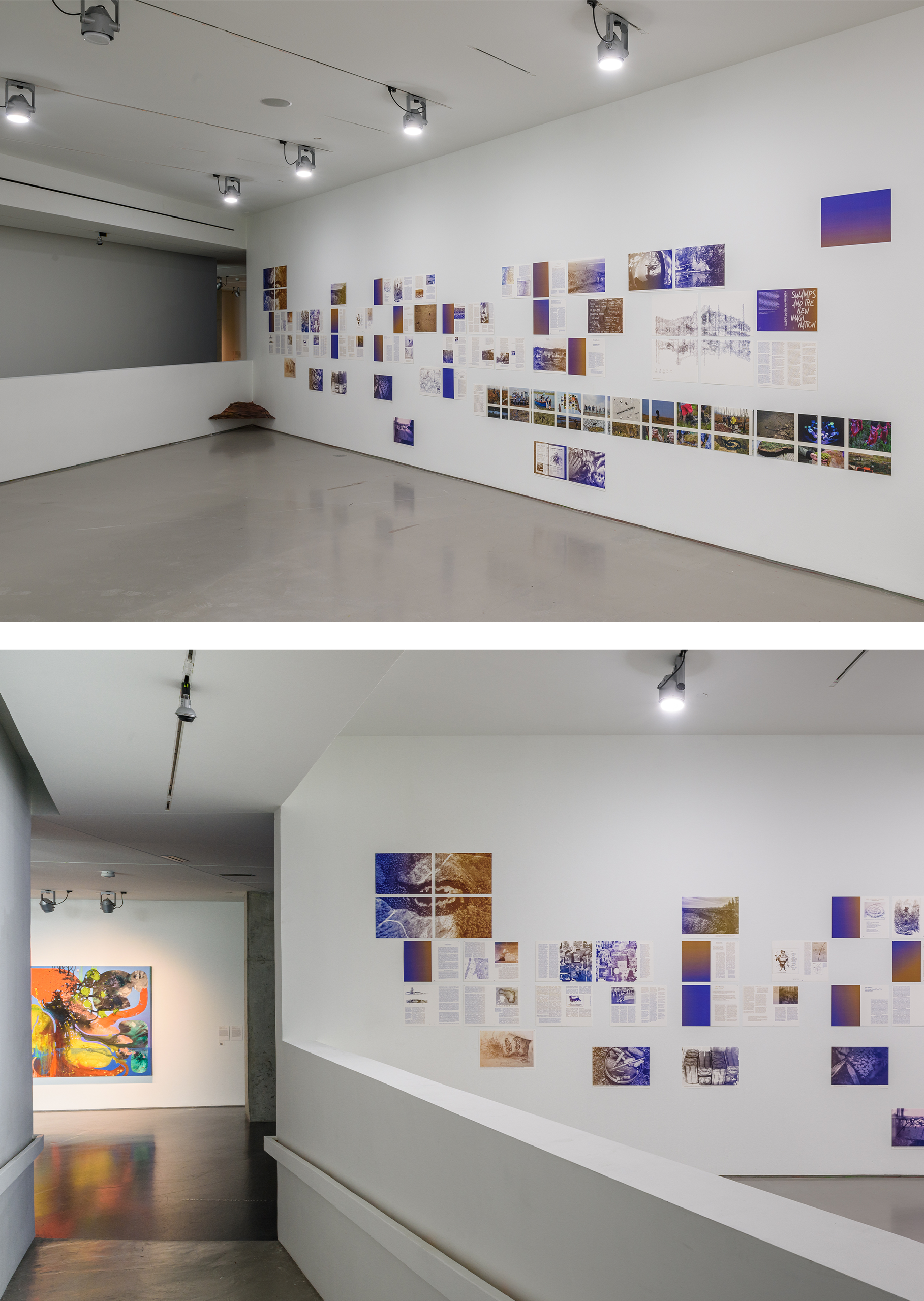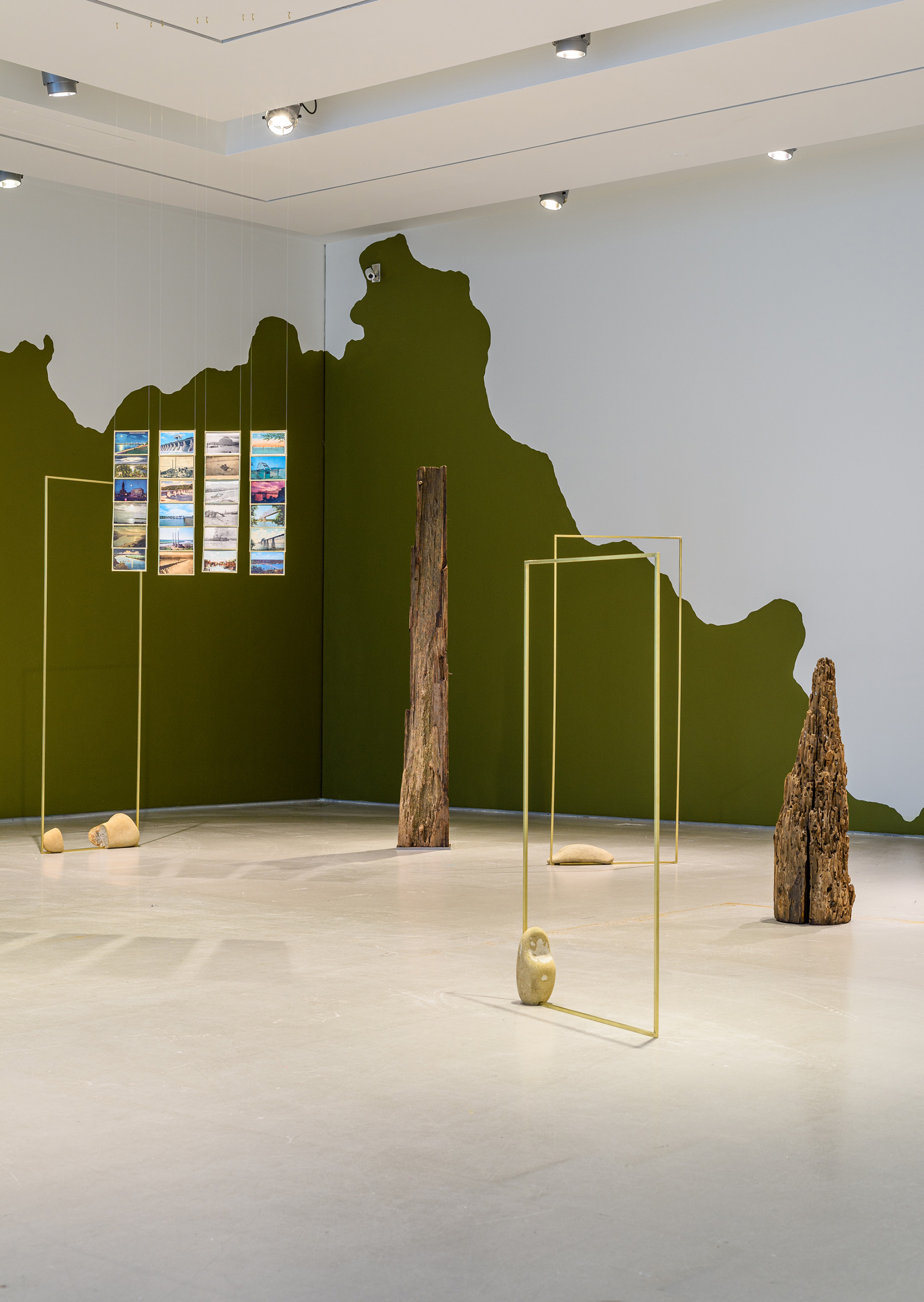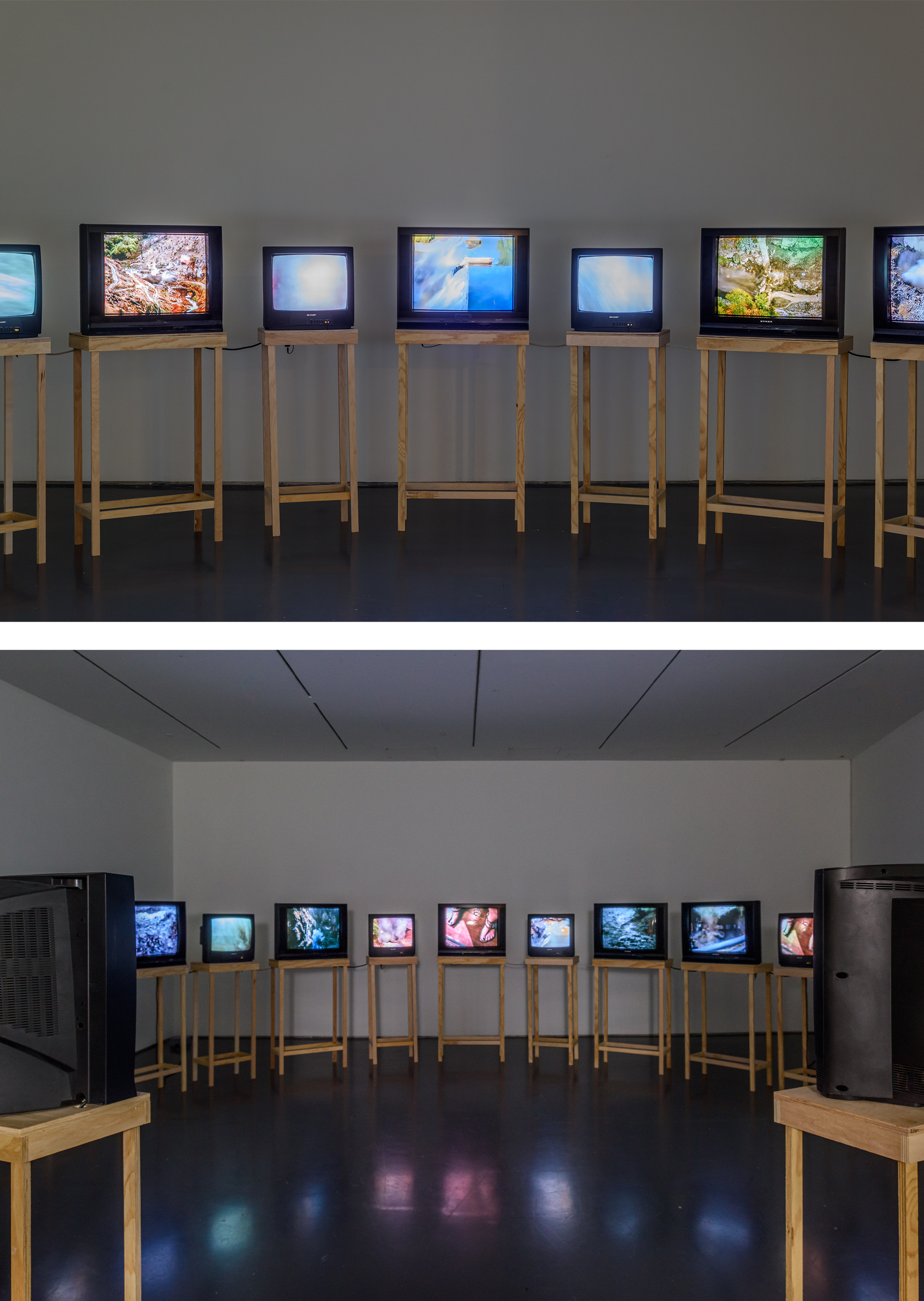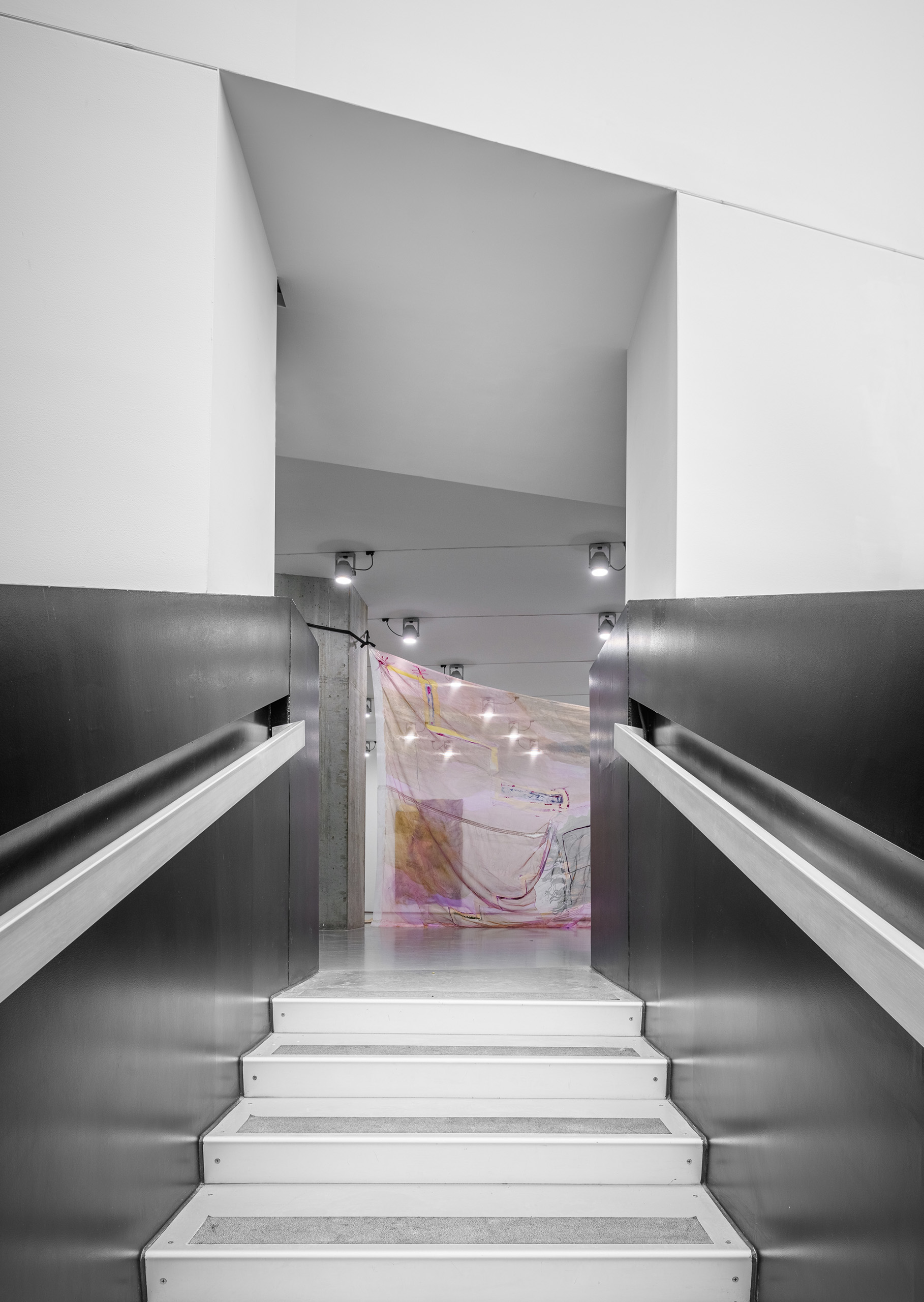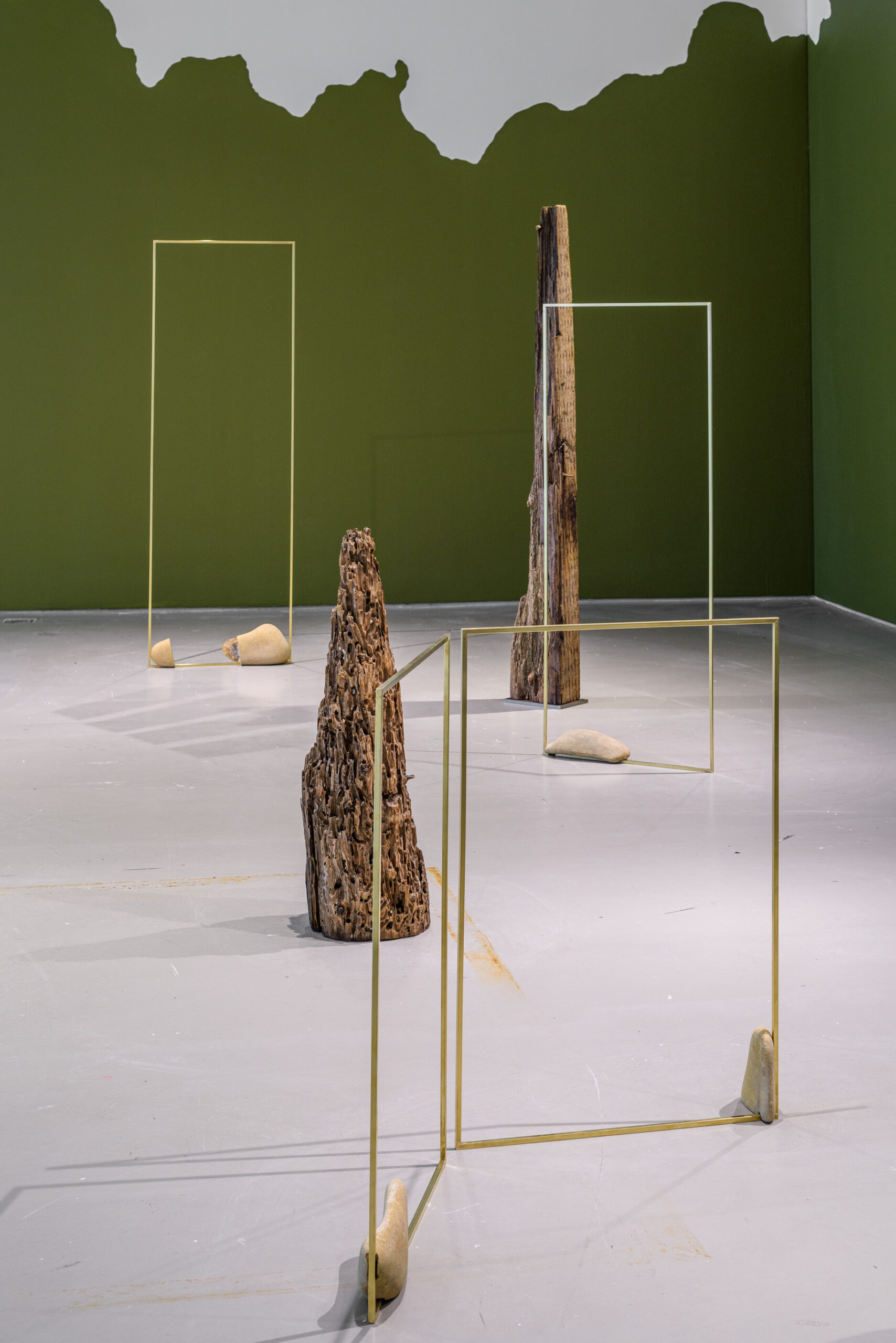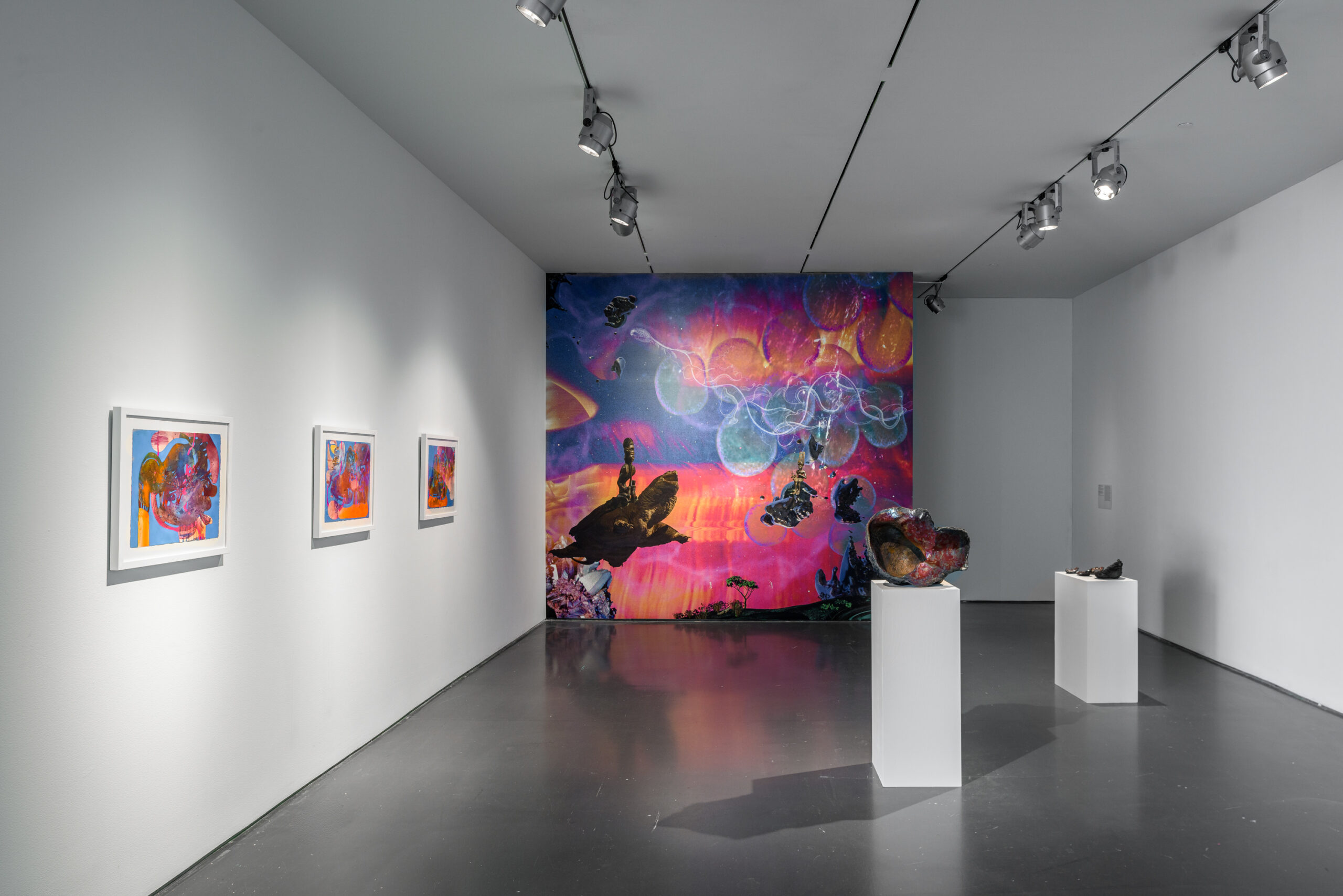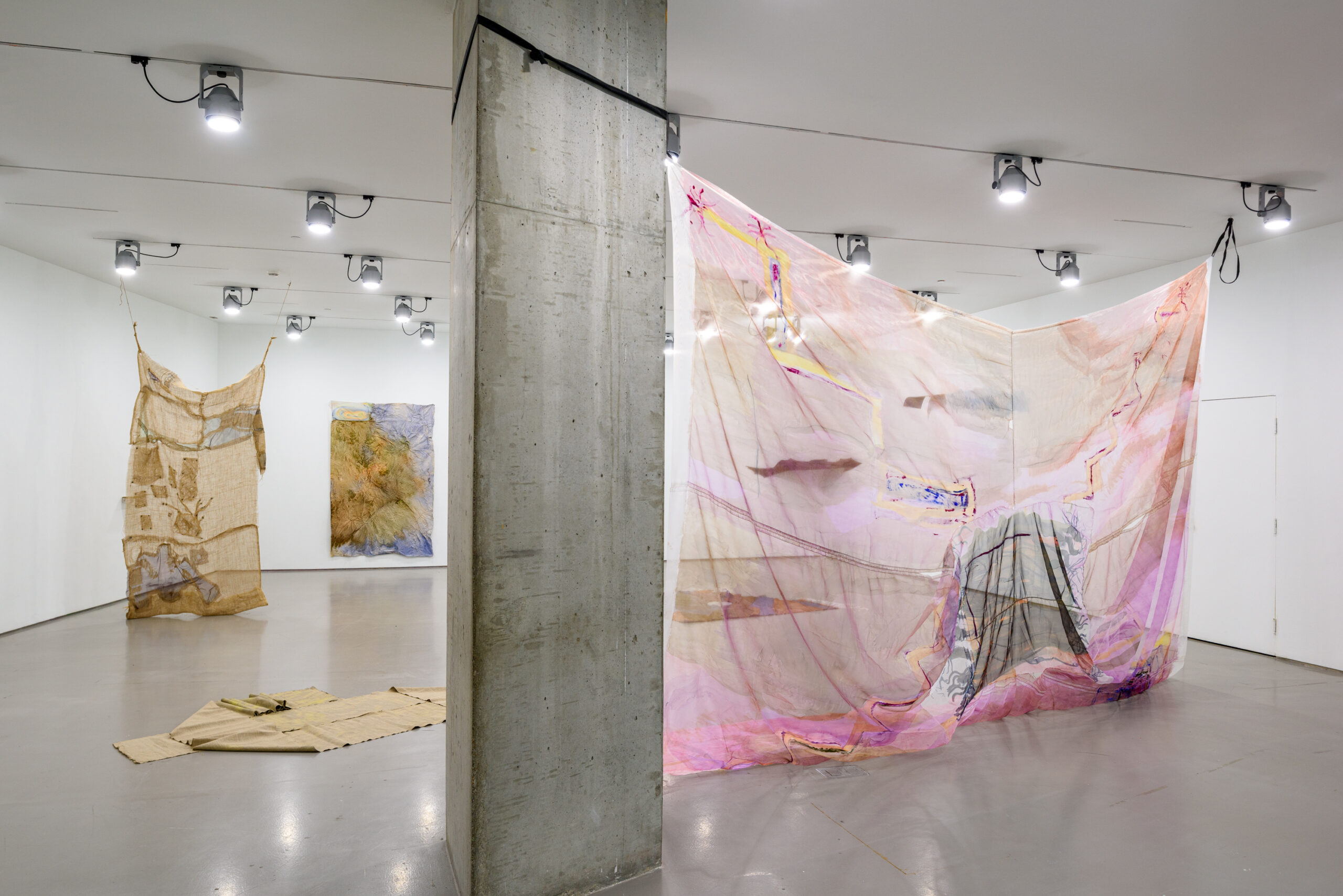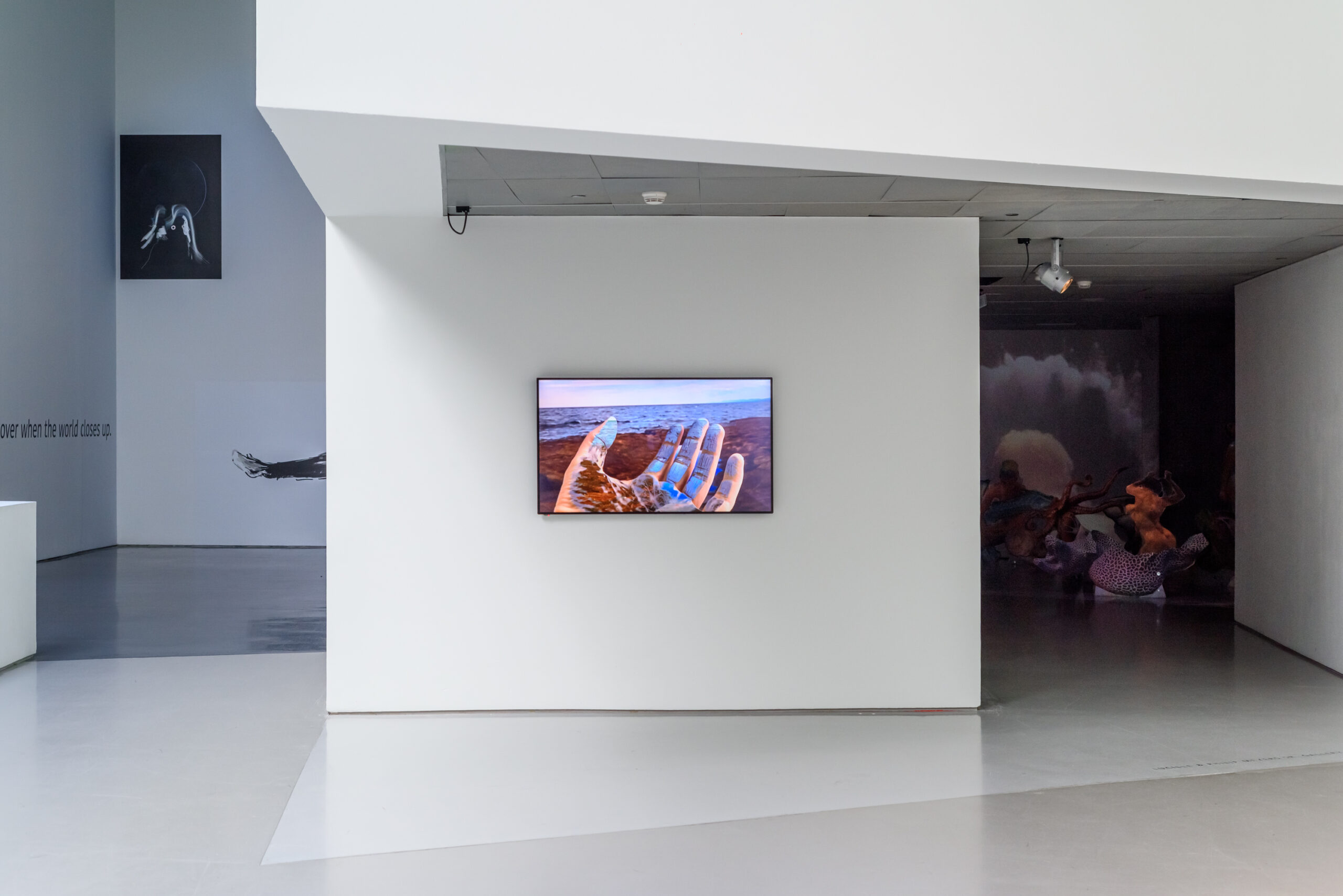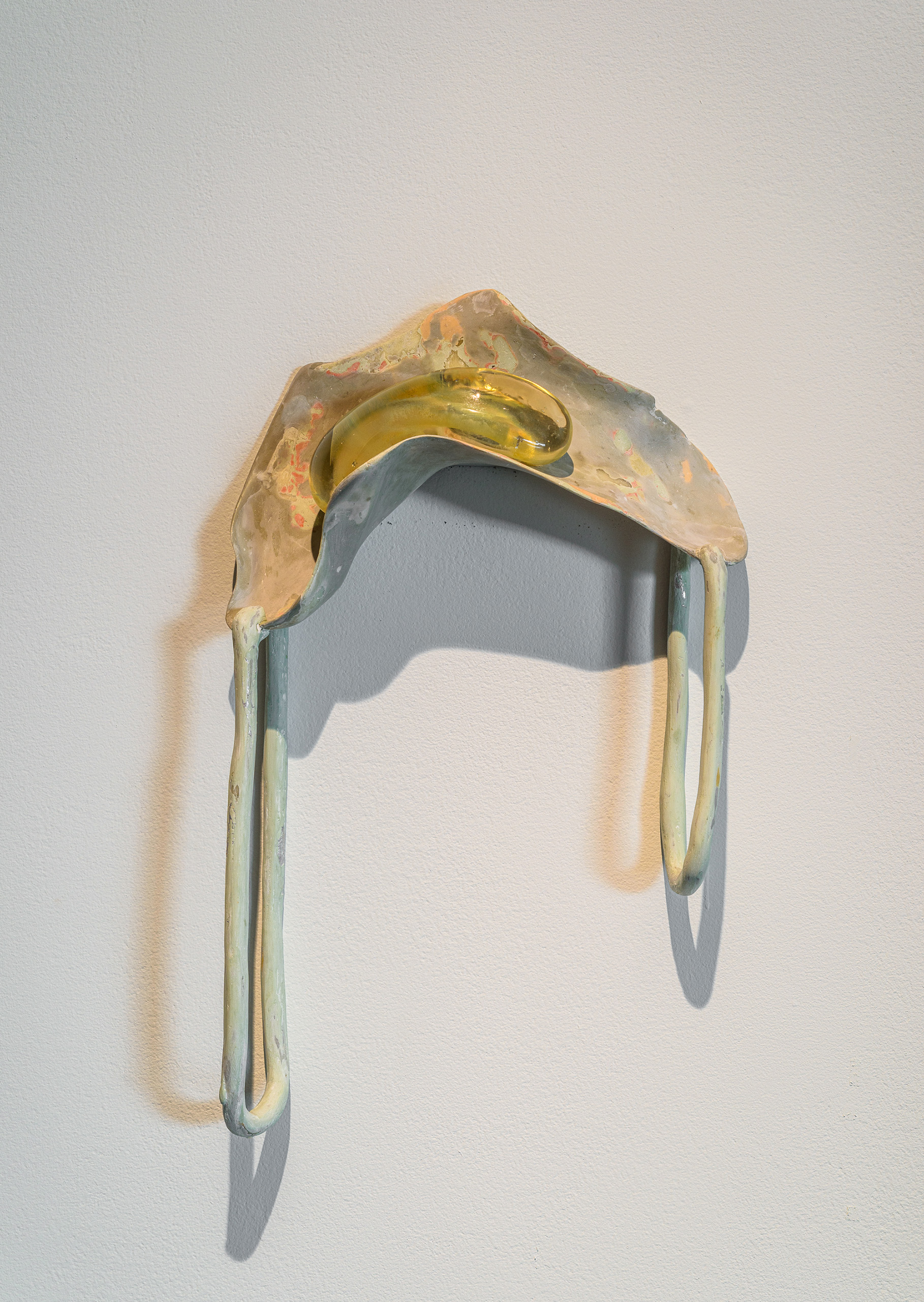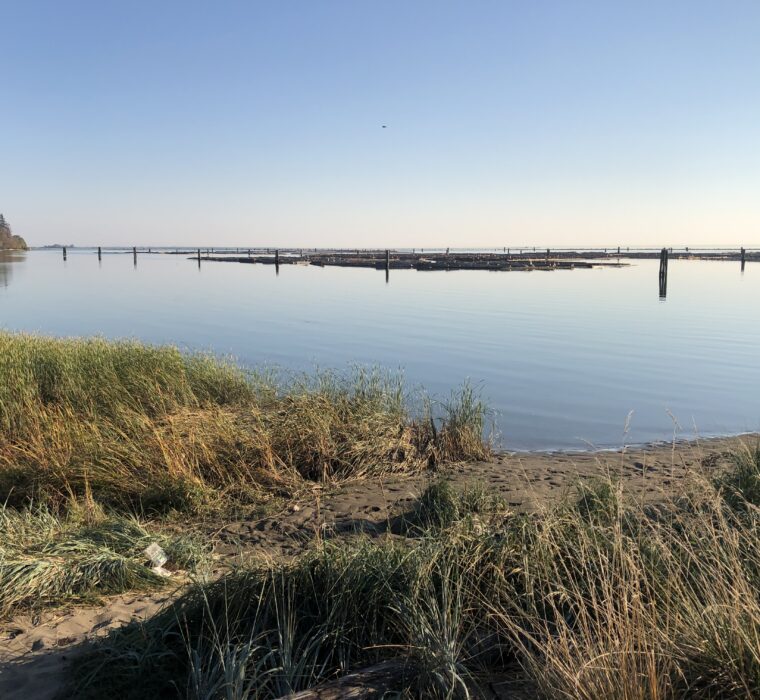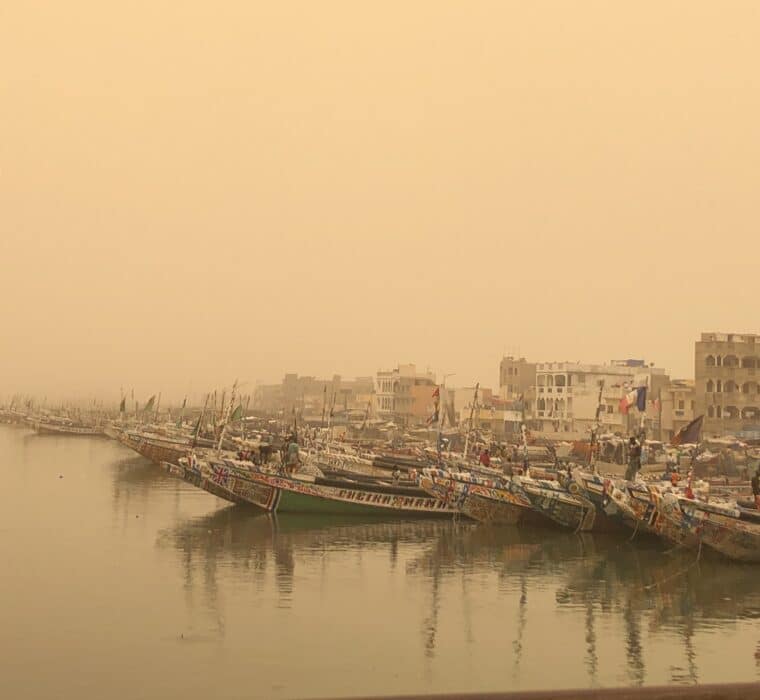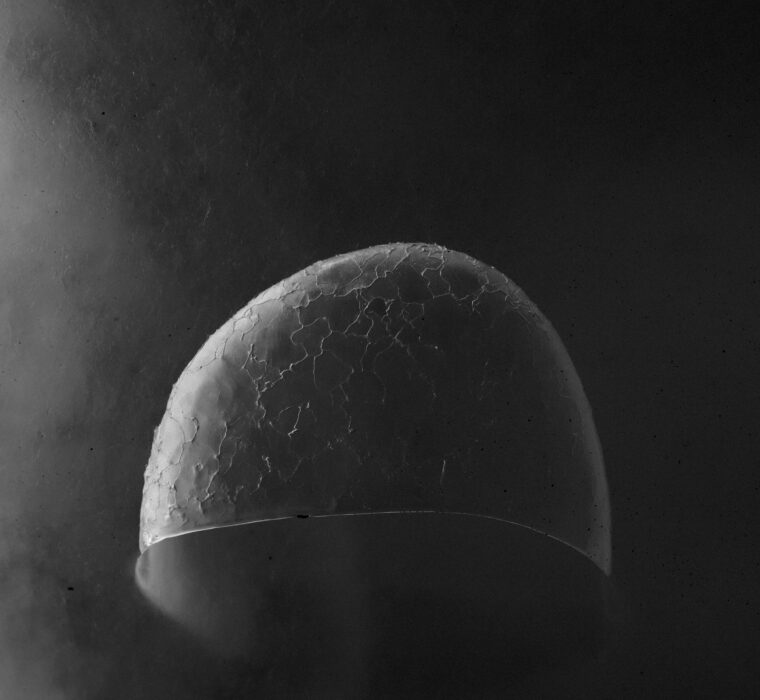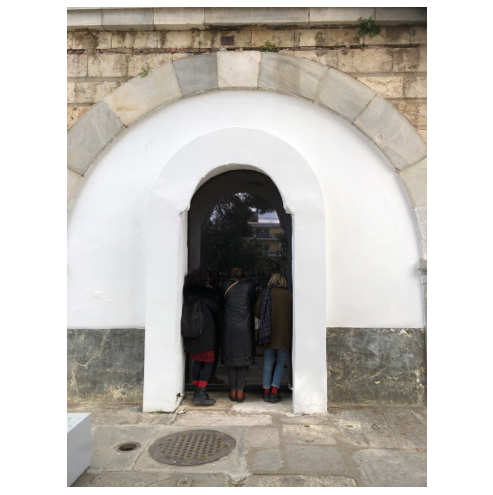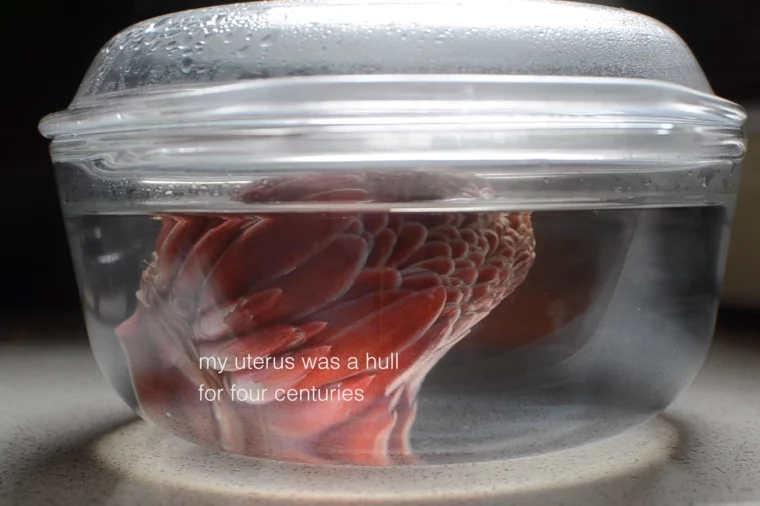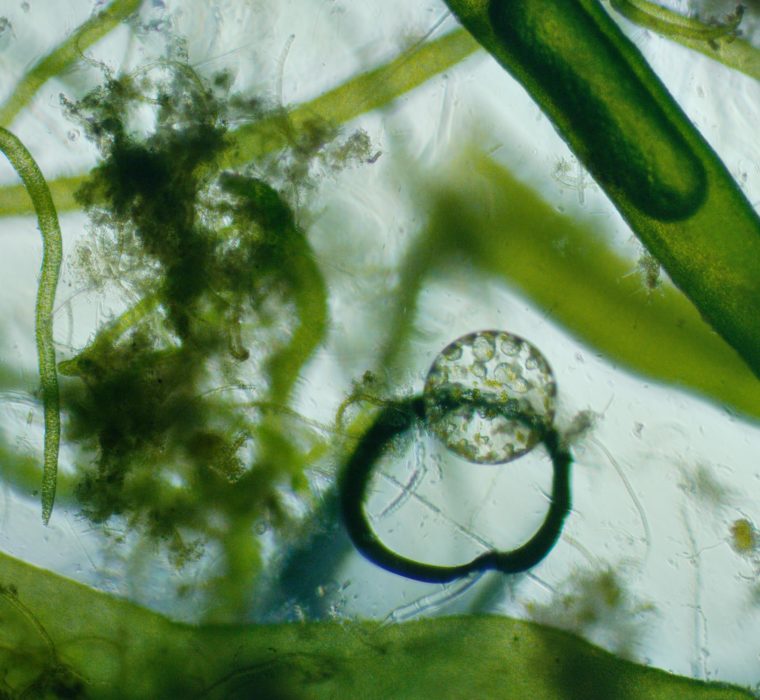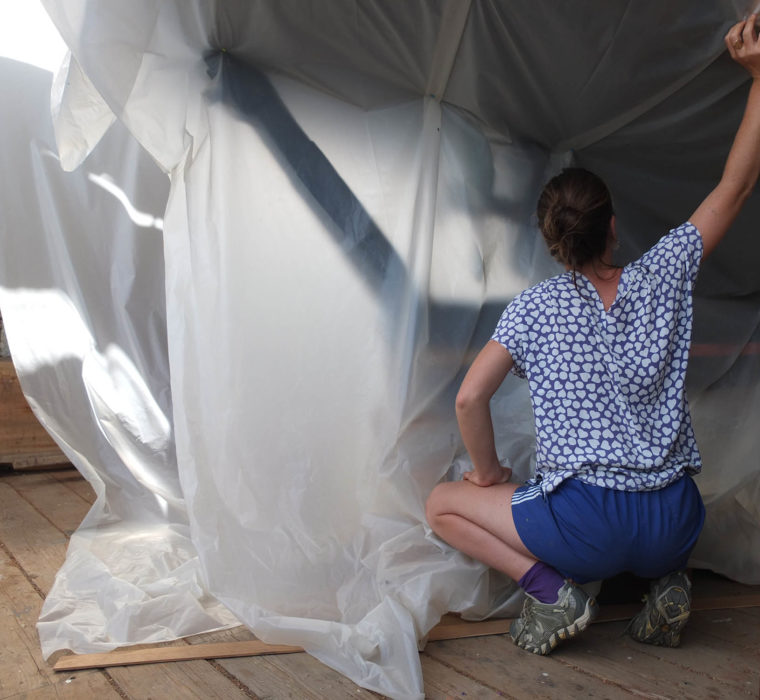Breaking Water
Artists
Martha Atienza
Marcos Ávila Forero
Cecilia Bengolea
Andrea Carlson
Carolina Caycedo
Jes Fan
Cleo Fariselli
Saodat Ismailova
Jaana Laakkonen
Calista Lyon & Carmen Winant
Paul Maheke
Josèfa Ntjam
Claudia Peña Salinas
Vian Sora
Nomeda & Gediminas Urbonas
Co-curated with Amara Antilla
Breaking Water
Artists
Martha Atienza
Marcos Ávila Forero
Cecilia Bengolea
Andrea Carlson
Carolina Caycedo
Jes Fan
Cleo Fariselli
Saodat Ismailova
Jaana Laakkonen
Calista Lyon & Carmen Winant
Paul Maheke
Josèfa Ntjam
Claudia Peña Salinas
Vian Sora
Nomeda & Gediminas Urbonas
Co-curated with Amara Antilla
“water never really ‘breaks’ but rather shifts form, moving in and out of bodies, [and] acts as both a signal and an agent of embodied change.”
– Carmen Winant
©Wes Batoclette
Breaking Water features work by seventeen artists in painting, sculpture, installation, and video that consider various approaches to the subjects of water, ecology, and feminism. Departing from the material properties of water as an adaptable and porous liquid that connects our bodies to the environments that sustain us, the exhibition explores wetness as a framework from which to consider our relationship to nature, other organisms, and society at large. These leaky interdependencies demonstrate humanity’s entanglements with other forms of life, where water—and its various formats— blood, semen, amniotic liquid, urine—act as “conduit[s] and mode[s] of connection”. By attending to the watery origins of all creation and the water that flows through us, it becomes possible to de-center largely capitalistic, colonialist, anthropomorphic perspectives.
“water never really ‘breaks’ but rather shifts form, moving in and out of bodies, [and] acts as both a signal and an agent of embodied change.”
– Carmen Winant
Breaking Water features work by seventeen artists in painting, sculpture, installation, and video that consider various approaches to the subjects of water, ecology, and feminism. Departing from the material properties of water as an adaptable and porous liquid that connects our bodies to the environments that sustain us, the exhibition explores wetness as a framework from which to consider our relationship to nature, other organisms, and society at large. These leaky interdependencies demonstrate humanity’s entanglements with other forms of life, where water—and its various formats— blood, semen, amniotic liquid, urine—act as “conduit[s] and mode[s] of connection”. By attending to the watery origins of all creation and the water that flows through us, it becomes possible to de-center largely capitalistic, colonialist, anthropomorphic perspectives.
©Wes Batoclette
©Wes Batoclette
©Wes Batoclette
From looking at water as a primal source of life to citing mythology, animism, and indigenous knowledge, or speculating on new horizons, Andrea Carlson, Carolina Caycedo, Claudia Peña Salinas, Paul Maheke, Josèfa Ntjam and Vian Sora are attentive to the ways in which water is both a site of mourning and renewal. Their work embodies efforts to reclaim water’s rights and instate a more equitable and sustainable future. Recognizing the urgency of protecting the world’s most precious resource and the necessary balance and vitality of aquatic ecosystems, Martha Atienza, Marcos Ávila Forero, Saodat Ismailova and Nomeda and Gediminas Urbonas explore the ethics of water. Others, such as Cecilia Bengolea, Jes Fan, Cleo Fariselli and Jaana Laakkonen focus on water as an interface fostering interconnectedness between species, structures, and systems. Its fluidity and agility creates room for original imaginaries that de-center the human perspective and focus on coexistence and collectivity.
©Wes Batoclette
From looking at water as a primal source of life to citing mythology, animism, and indigenous knowledge, or speculating on new horizons, Andrea Carlson, Carolina Caycedo, Claudia Peña Salinas, Paul Maheke, Josèfa Ntjam and Vian Sora are attentive to the ways in which water is both a site of mourning and renewal. Their work embodies efforts to reclaim water’s rights and instate a more equitable and sustainable future. Recognizing the urgency of protecting the world’s most precious resource and the necessary balance and vitality of aquatic ecosystems, Martha Atienza, Marcos Ávila Forero, Saodat Ismailova and Nomeda and Gediminas Urbonas explore the ethics of water. Others, such as Cecilia Bengolea, Jes Fan, Cleo Fariselli and Jaana Laakkonen focus on water as an interface fostering interconnectedness between species, structures, and systems. Its fluidity and agility creates room for original imaginaries that de-center the human perspective and focus on coexistence and collectivity.
Artists’ Interviews
Carmen Calista – Breaking Water
Carolina – Water portraits
Claudia – Work
Artists’ Interviews
Carmen Calista – Breaking Water
Carolina – Water portraits
Claudia – Work
Continuously moved by currents, water can also be seen as an agent of change and transformation capable of eliciting alternative forms of action and knowledge production. The title, Breaking Water, is borrowed from a newly commissioned video installation by Calista Lyon and Carmen Winant, which mobilizes water as a catalyst for thinking about societal paradigm shifts. Juxtaposing images of “water breaking” in the context of both childbirth and river restoration projects, the installation features dramatic footage of explosions and gushing water in the immediate aftermath of initiatives to liberate waterways. This imagery is punctuated by kitsch, sometimes humorous portrayals of the moment in labor when the amniotic sac ruptures. Ultimately, this exhibition is a meditation on the resilience of water, and how we can learn from that capacity to be moved and to move.
©Wes Batoclette
Continuously moved by currents, water can also be seen as an agent of change and transformation capable of eliciting alternative forms of action and knowledge production. The title, Breaking Water, is borrowed from a newly commissioned video installation by Calista Lyon and Carmen Winant, which mobilizes water as a catalyst for thinking about societal paradigm shifts. Juxtaposing images of “water breaking” in the context of both childbirth and river restoration projects, the installation features dramatic footage of explosions and gushing water in the immediate aftermath of initiatives to liberate waterways. This imagery is punctuated by kitsch, sometimes humorous portrayals of the moment in labor when the amniotic sac ruptures. Ultimately, this exhibition is a meditation on the resilience of water, and how we can learn from that capacity to be moved and to move.
Artwork Excerpt
Artwork Excerpt
The exhibition was accompanied by a parallel film screening program in the CAC’s Black Box. It expanded on the exhibition’s themes of liquidity and interconnectedness. By engaging water as an adaptable agent, the selected films consider how water’s fluid nature can be activated as a means of protest, resistance, and transformation. Many of the films, like Khvay Samnang’s Popil (2018) and Claudia Peña Salinas’ Metzilocan (2019), incorporate ancestral mythologies and ritualistic practices as a postcolonial tactic. Thus, they pay tribute to sources of knowledge that exist outside of Western modernity and its imperialistic intentions. Others, such as Allora & Calzadilla’s A Man Screaming Is Not a Dancing Bear (2008), represent water’s dynamic, immersive, and potentially destructive power, which is capable of transforming a landscape and its inhabitants.
©Wes Batoclette
Addressing the age of the Anthropocene, in which human activity has irreversibly affected the climate, several of the films also examine the eco-ethics of water in pursuit of environmental justice. Indigenous communities have been disproportionately displaced by these ecological changes, illustrating how the present climate crisis is tied to violent histories of settler colonialism—the forced migration and genocide of Indigenous peoples. By reflecting on issues of ecological crises and the preciousness of water, several of the films within this series, including Carolina Caycedo’s A Gente Rio (The People River) (2016) and Marianne Fahmy’s what things may come (2019), imagine alternative solutions for an equitable and sustainable future. The exhibition’s screening program engages feminist theories, interspecies relationships, and Indigenous histories to consider water as a source of life that is perpetually adapting to its environment, forming boundless liquid connections.
©Wes Batoclette
The exhibition was accompanied by a parallel film screening program in the CAC’s Black Box. It expanded on the exhibition’s themes of liquidity and interconnectedness. By engaging water as an adaptable agent, the selected films consider how water’s fluid nature can be activated as a means of protest, resistance, and transformation. Many of the films, like Khvay Samnang’s Popil (2018) and Claudia Peña Salinas’ Metzilocan (2019), incorporate ancestral mythologies and ritualistic practices as a postcolonial tactic. Thus, they pay tribute to sources of knowledge that exist outside of Western modernity and its imperialistic intentions. Others, such as Allora & Calzadilla’s A Man Screaming Is Not a Dancing Bear (2008), represent water’s dynamic, immersive, and potentially destructive power, which is capable of transforming a landscape and its inhabitants.
©Wes Batoclette
©Wes Batoclette
Addressing the age of the Anthropocene, in which human activity has irreversibly affected the climate, several of the films also examine the eco-ethics of water in pursuit of environmental justice. Indigenous communities have been disproportionately displaced by these ecological changes, illustrating how the present climate crisis is tied to violent histories of settler colonialism—the forced migration and genocide of Indigenous peoples. By reflecting on issues of ecological crises and the preciousness of water, several of the films within this series, including Carolina Caycedo’s A Gente Rio (The People River) (2016) and Marianne Fahmy’s what things may come (2019), imagine alternative solutions for an equitable and sustainable future. The exhibition’s screening program engages feminist theories, interspecies relationships, and Indigenous histories to consider water as a source of life that is perpetually adapting to its environment, forming boundless liquid connections.
Artists’ Interviews
Cleo – Fluidity
Jaana – Not solving
Jaana – Representation
Artists’ Interviews
Cleo – Fluidity
Jaana – Not solving
Jaana – Representation
Installation Videos
Installation Videos
Detailed Screening Program
May
Claudia Peña Salinas, Metzilocan (2019)
Shirley Bruno, Tezen (2016)
Claudia Peña Salinas, Tlachacan (2017)
Tash Naveau, Menaptwi (Smoked) (2018)
June
Arjuna Neuman and Denise Ferreira da Silva, 4 Waters — Deep Implicancy (2018)
Carolina Caycedo, A Gente Rio (The People River) (2016)
Tabita Rezaire, Deep Down Tidal (2017)
July
Marianne Fahmy, what things may come (2019)
Elsa Brès, Sweat (2020)
Jennifer Allora and Guillermo Calzadilla, A Man Screaming Is Not a Dancing Bear (2008)
Khvay Samnang, Popil (2018)
August
Sky Hopinka, maɬni — towards the ocean, towards the shore (2020)
©Wes Batoclette
Detailed Screening Program
May
Claudia Peña Salinas, Metzilocan (2019)
Shirley Bruno, Tezen (2016)
Claudia Peña Salinas, Tlachacan (2017)
Tash Naveau, Menaptwi (Smoked) (2018)
June
Arjuna Neuman and Denise Ferreira da Silva, 4 Waters — Deep Implicancy (2018)
Carolina Caycedo, A Gente Rio (The People River) (2016)
Tabita Rezaire, Deep Down Tidal (2017)
July
Marianne Fahmy, what things may come (2019)
Elsa Brès, Sweat (2020)
Jennifer Allora and Guillermo Calzadilla, A Man Screaming Is Not a Dancing Bear (2008)
Khvay Samnang, Popil (2018)
August
Sky Hopinka, maɬni — towards the ocean, towards the shore (2020)
Artists’ Interviews
Paul – Water emotion
Saodat – Breaking water
Vian – Dichotomy
Artists’ Interviews
Paul – Water emotion
Saodat – Breaking water
Vian – Dichotomy
©Wes Batoclette
©Wes Batoclette
©Wes Batoclette
Breaking Water concluded with a publication opened by an introductory essay by Amara Antilla and Clelia Coussonnet, and a glossary written in collaboration with the Singapore Art Museum, including terms such as aquapelagic, leaky bodies, hydrofeminism, wet ontologies, liquid interfaces, underwater communication, and more. It also features essays on each artist by contributors Amara Antilla, Diana B. Campbell, Clelia Coussonnet, Chandra Frank, Stefanie Hessler, Stephanie Kang and Roxane T. Ornelas.
©Wes Batoclette
Breaking Water concluded with a publication opened by an introductory essay by Amara Antilla and Clelia Coussonnet, and a glossary written in collaboration with the Singapore Art Museum, including terms such as aquapelagic, leaky bodies, hydrofeminism, wet ontologies, liquid interfaces, underwater communication, and more. It also features essays on each artist by contributors Amara Antilla, Diana B. Campbell, Clelia Coussonnet, Chandra Frank, Stefanie Hessler, Stephanie Kang and Roxane T. Ornelas.
Artworks Excerpts
Artworks Excerpts
Cincinnati Contemporary Arts Center, USA
May 6 – August 14, 2022
©Wes Batoclette
Breaking Water received special sponsorship by the Andy Warhol Foundation for the Visual Arts, the FACE Foundation, the Finnish Cultural Foundation, Frame Contemporary Art Finland, the National Endowment for the Arts and Sue Friedlander.
Cincinnati Contemporary Arts Center, USA
May 6 – August 14, 2022
Breaking Water received special sponsorship by the Andy Warhol Foundation for the Visual Arts, the FACE Foundation, the Finnish Cultural Foundation, Frame Contemporary Art Finland, the National Endowment for the Arts and Sue Friedlander.

